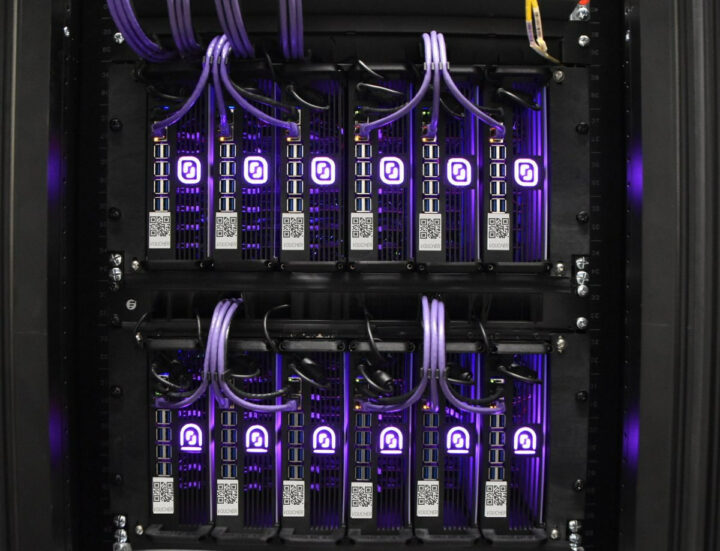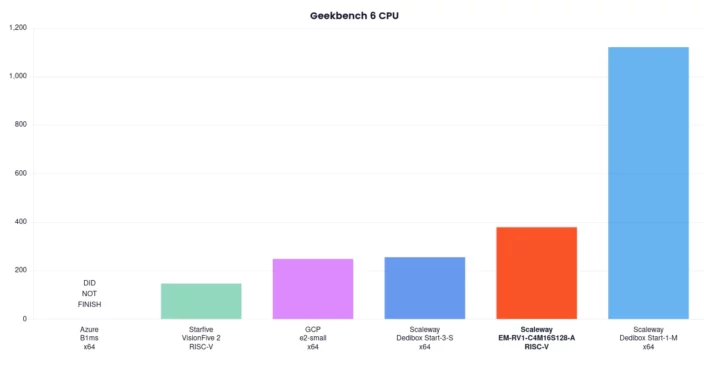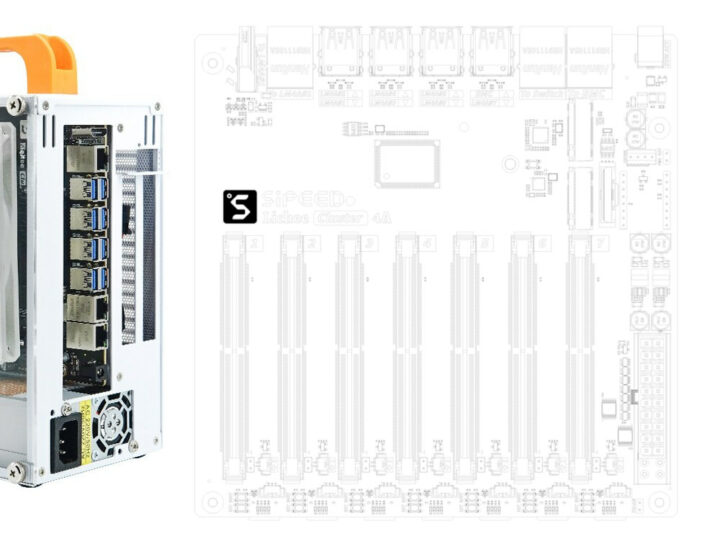French company Scaleway has just launched the “Elastic Metal RV1” bare metal servers which it claims to be the world’s first RISC-V servers available in the cloud with pricing at 0.042 Euros per hour, or 15.99 Euros a month excluding VAT.
Scaleway launched some Arm servers based on Marvell Armada 370/XP quad-core Cortex A9 processor in 2015 before phasing those out a few years ago, and they are now just offering AMD and Intel-based servers and hosted Apple Mac computers based on the M1 Arm chip. But the company has decided to try something new again with the EM-RV1 servers based on Alibaba T-Head TH1520 quad-core RISC-V processor, 16GB RAM, and 128GB eMMC flash and running Debian, Ubuntu, or Alpine.

EM-RV1-C4M16S128-A instance key features and specifications:
- SoC – Alibaba T-Head TH1520
- CPU – Quad-core RISC-V Xuantie C910 (RV64GCV) processor @ 1.85 GHz
- GPU – Imagination BXM-4-64 with support for OpenCL 1.1/1.2/2.0, OpenGL ES 3.0/3.1/3.2, Vulkan 1.1/1.2, Android NN HAL
- VPU – H.265/H.264/VP9 video encoding/decoding
- NPU – 4 TOPS @ INT8 with support for TensorFlow, ONNX, Caffe
- System Memory – 16GB LPDDR4
- Storage – 128GB eMMC flash
- Networking – 100 Mbit/s Ethernet network card with public IPv4 and IPv6 addresses included
- Power Consumption – 0.96W to 1.9W per core @ ~1.8GHz; average: 1.3W per core
- Custom design with laser-cut chassis, 3D-printed blades
- Pricing – 0,042 € per hour, 15,99 € per month

Scaleway also shared some benchmark results showing the performance of the EM-RV1 RISC-V server against the StarFive VisionFive 2 RISC-V SBC and some of their x86 instances. In Geekbench 6, it’s faster than a server based on an Intel C2350 dual-core processor (Dedibox Start-3-S), but still ways off the octa-core Intel C2750-based Dedibox Start-1-M.
Note the EM-RV1 instances are part of Scaleway Labs so it’s mostly for evaluation, but the company also says the RISC-V server can be useful for testing RISC-V applications, CI/CD, and AI applications thanks to the 4 TOPS NPU found in each TH1520 SoC. You can get started on the product page where you’ll also find additional information and extra benchmarks.
I didn’t try the Scaleway RISC-V server myself, but Bret Weber did and he reported his experience setting up an instance with Ubuntu 23.10 (GNU/Linux 5.10.113+ riscv64) and ran several benchmarks. Scaleway says the EM-RV1 servers have been designed in-house with “the soldering of electronic components, the development of specific firmware, and the manufacture of the enclosures using 3D printing”, but Bret also noted the arrangement of the ports on the first photo in this post looks very similar to the Sipeed Lichee Cluster 4A box.
So it looks like they used the Sipeed Cluster 4A box’s motherboard fitted with Sipeed LM4A modules, and customized the mechanical design so that they can fit several such boards into a rack.

Jean-Luc started CNX Software in 2010 as a part-time endeavor, before quitting his job as a software engineering manager, and starting to write daily news, and reviews full time later in 2011.
Support CNX Software! Donate via cryptocurrencies, become a Patron on Patreon, or purchase goods on Amazon or Aliexpress





